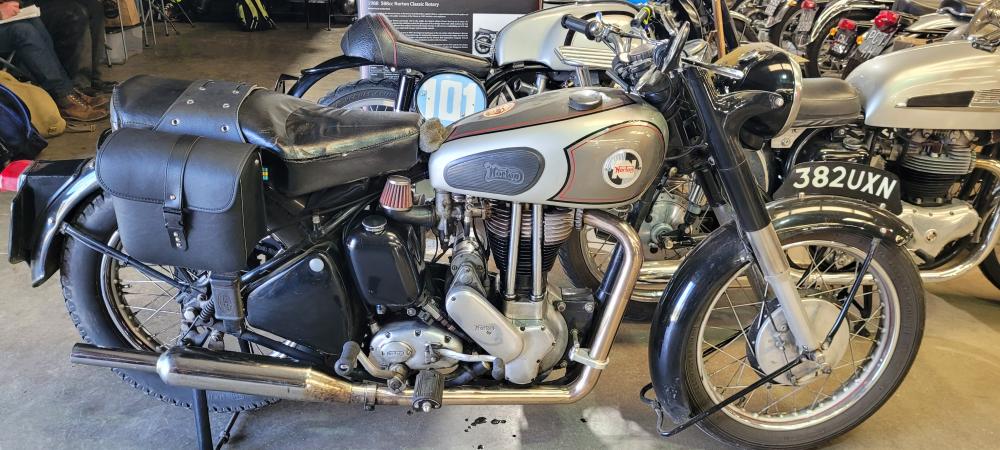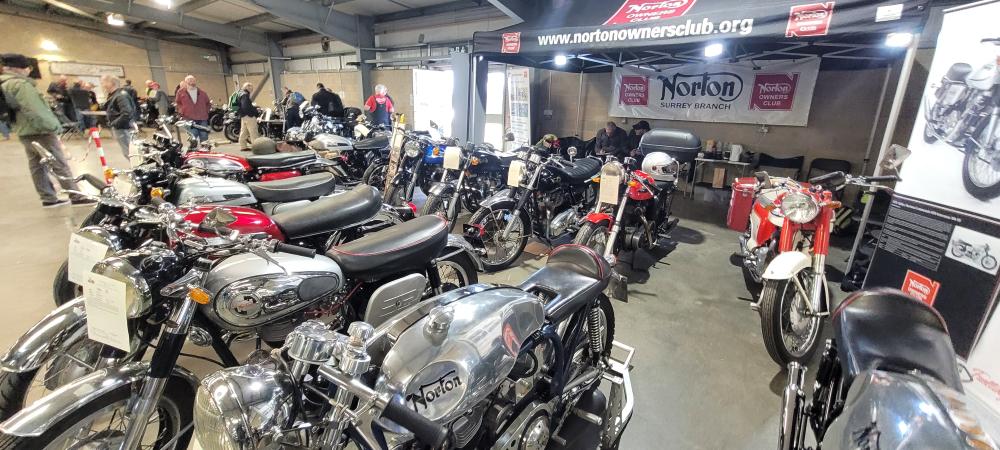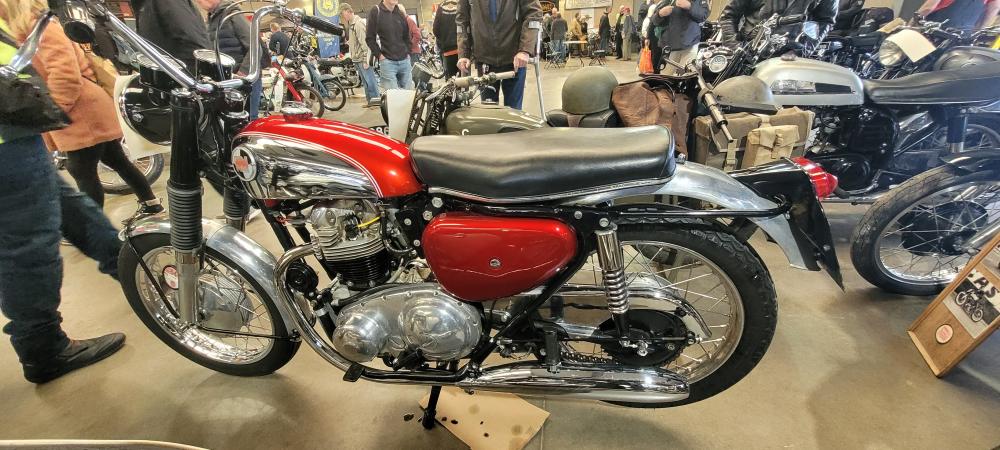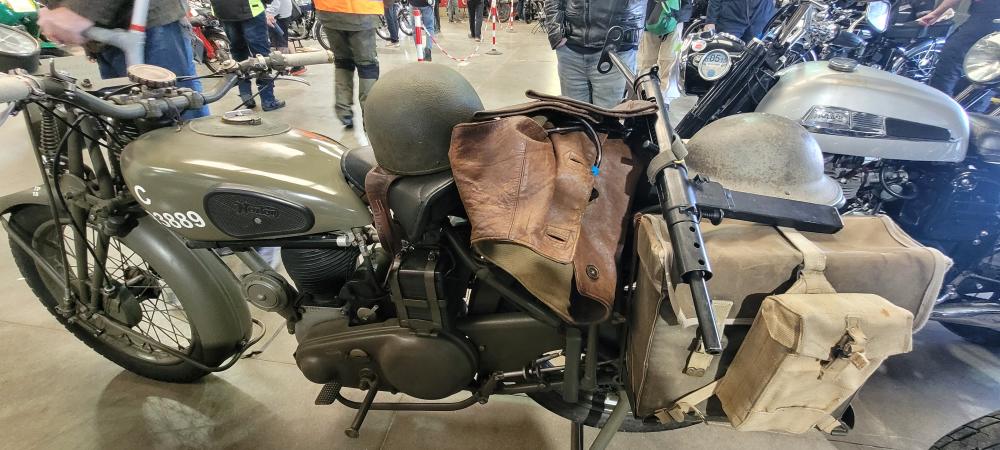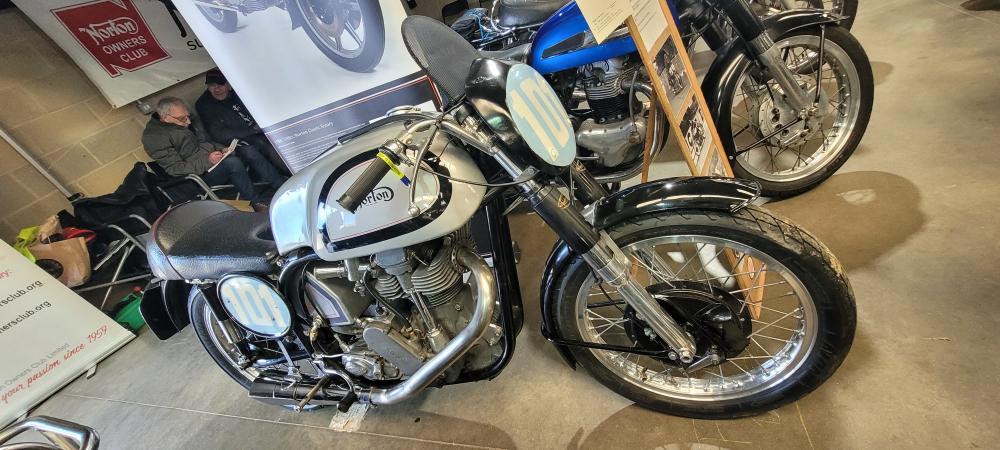R.F. Mann - Roadholder No. 121 - May/Jun 1985
Most people concerned with restoration have, at some time or other, had components blast cleaned using one of several available methods. The particular method used on any one component is critical. On the one hand the part could be ruined, and on the other you would be paying for a far better finish than you need.
All blast cleaning processes remove metal. Dry grit blasting will remove a lot of metal; vapour bead blasting will remove little. I have listed below the various processes of blast cleaning in order of aggression:-
| 1. Dry shot blasting | 2. Dry grit blasting (with pressurised grit supply) |
3. Dry grit blasting (with suction grit supply) |
| 4. Dry bead blasting | 5. Vapour bead blasting |
1. Dry Shot Blasting
Although most people regard any blast cleaning process as shot blasting, technically 'shot' blasting refers to blasting with round steel balls. This is a very aggressive process and is therefore not suitable for the restorer.
2. Dry Grit Blasting (pressurised grit)
With this method the container of grit is pressurised and, like shot blasting, is very aggressive, but it does have its uses. It will remove heavy rust and thick paint deposits from steel both quickly and cheaply. On large areas it is therefore probably the best process to use. Remember though that it is really only suitable on thick steel parts, it would be all too easy to blast through a thin section or even to distort it.
3. Dry Grit Blasting (suction grit supply)
Instead of being forced to the gun it is sucked, and because of this the concentration of grit at the gun is much lower. This form of grit blasting is therefore less aggressive than that above. It can be used for removing rust and paint from most metal items without too much damage being done to the metal underneath. Again, remove any parts which may become damaged or mask them well (one layer of masking tape is not enough). This is probably the best process for such things as any relatively small item which is to be repainted.
4. Dry Bead Blasting
This is more of a cosmetic finish and uses glass beads instead of grit. Because the grit particles are more spherical they do not have a cutting action. They will therefore remove contamination and finish surfaces without destroying critical tolerances of the parts being treated. Bead blasting is much slower than grit blasting and is therefore more costly. Use it on parts where the surface would otherwise be damaged. As a true decorative surface I consider that it is over-rated. Although a freshly bead blasted surface is clean and has a slight sheen, it does tend to be a 'spikey' surface and because of this it becomes dirty quickly and difficult to clean - as you will well know if you have had any components dry bead blasted.
5. Vapour Bead Blasting
The least aggressive form of all cleaning techniques previously
described. Absolutely ideal where you do not want to damage the component.
Vapour blasting uses glass beads and compressed air, but in addition it also
uses water under high pressure, the glass beads being suspended in the high
pressure water/air jet. Each small bead is cushioned by the water when it hits
the surface being cleaned. The result is that the vapour blasting process
actually smoothes and polishes the surface, unlike the dry blast processes which
tend to roughen the surface the more it is processed. Vapour blasting is the
only process I know of which will reproduce the original bright shiny surface as
seen on new aluminium castings such as cylinder heads, blocks or gearbox
castings. The surface literally shines just as it did when first manufactured.
Unlike dry blasting, the surface does not mark easily and when it does become
dirty it can be easily cleaned because of the 'closed' texture of the surface.
This 'closed' surface texture also means that the component will be far less
susceptible to corrosion. For this reason it has been found that alloy wheels,
when vapour blasted and lacquered, will resist corrosion far better than when
originally polished. If you take components to be vapour blasted it does not
matter, within reason, if they are oily and greasy because greasing and cleaning
is carried out in one operation. In addition, rust inhibitors are added to the
water so that steel items will not subsequently rust. This is not a permanent
rust proofing process, but will give protection for one or two weeks- long
enough at least to prime the parts. Vapour blasting is the most expensive of the
five processes described because it is the most time consuming to perform and
because the equipment costs around six times more than for other blast cleaning
processes. Roughly, if an item were to cost say, £5.00 to have dry bead blasted,
then it would cost around £7.00 to have it vapour blasted.
Generally a specialist blast cleaning firm will be able to
advise you on the most suitable process for your requirements, but make sure
they are in fact able to offer the various different processes- obviously if
they only have one type of process they might well give a biased opinion.
|
© Norton Owners Club 1985 |
© Norton Owners Club 1997 |

